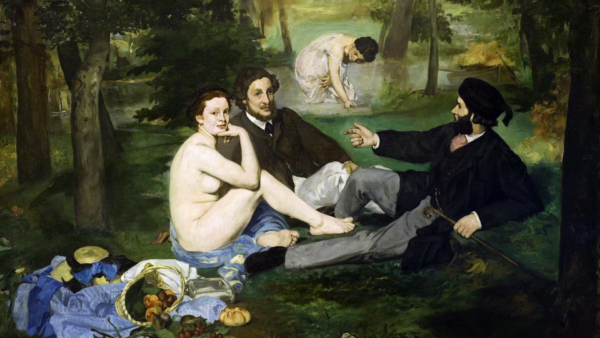 When I became a wine enthusiast, the standards for fine wine were set in just three places: Bordeaux, Burgundy, and Champagne. In Boston, little Italian wine — or even French wine from other regions — was available well into the 1970’s. The situation probably has many analogues, but the one that keeps coming back to me is the Salon, France’s state-sponsored annual art exhibition that received a jolt in 1863 when a group of artists whose work had been rejected by the jury protested their exclusion by staging an exhibition of their own. The show became known as the Salon des Refusés.
When I became a wine enthusiast, the standards for fine wine were set in just three places: Bordeaux, Burgundy, and Champagne. In Boston, little Italian wine — or even French wine from other regions — was available well into the 1970’s. The situation probably has many analogues, but the one that keeps coming back to me is the Salon, France’s state-sponsored annual art exhibition that received a jolt in 1863 when a group of artists whose work had been rejected by the jury protested their exclusion by staging an exhibition of their own. The show became known as the Salon des Refusés.
The official Salon set and maintained standards for good taste in painting and sculpture not just for France, but for all of Europe and America, too. In its view, what constituted fine art was a settled matter. Imitation, rather than progress, was what was wanted. Among the refusés that year were a few names you might recognize: Gustav Courbet, Camille Pissarro, and Édouard Manet (that’s his rejected Déjeuner sur l’Herbe, above). By turning away their work, the Salon guaranteed that the genetic material out of which modern art evolved would be drawn from the refusé pool, rather than from the cadre of establishment artists.
To understand the wine world of today, let the Salon represent those making wine in a conventional, internationally approved manner — professional, polished, deeply-colored (if red), rich in fruit and with a plush texture — and ready to avail itself of almost any technology (or additive) that promises to enhance these features.
Standing in for the refusés, conjure a motley collection of small-scale vintners with little in common except a willingness to push the envelope of accepted practice – in many cases by turning back the clock to a kind of farming that predates the chemical era, and to cellar work that reflects a preference for letting nature take its course.
With this group one can’t really speak of a single approach to winemaking or a consistent style of wine that’s in view. Progress isn’t seen as incrementally more of what already is, but as a continuous probing of boundaries to see what might be possible.
Whether this brave new world of winemaking will ever produce the creative equivalent of a Manet (or has already) we can’t say. What’s perhaps more intriguing is whether it will ever produce a Jackson Pollock (per above).
What would abstract expressionist wine taste like, one wonders — and could you even keep it in a bottle?
This Week in the Wine Corner . . .
THURSDAY JUNE 21, 3-6 PM — REFUSE ME NOT
2017 Domaine La Cabotte “Colline” Côtes du Rhône Blanc, $17.95 #myrhonetruelove
2017 Mas de Cynanque “Fleur de Cynanque” Saint-Chinian Rosé, $16.95 #drinkpurposefulpink
2014 Domaine de la Chevalerie, “Diptyque Incroyable” Bourgeuil, $19.95 #chillothewisp
FRIDAY JUNE 22, 4-6 PM — VINCENT, WE HARDLY KNEW YE
2017 Meinklang Burgenland White, $16.95 #floralarrangement
NV Pere Mata Rosé of Cava, $18.95 mataharidrankthis
2016 Natalino del Prete, Negroamaro Vino di Tavola “Anne,” $17.95 #leatherreport
– Stephen Meuse